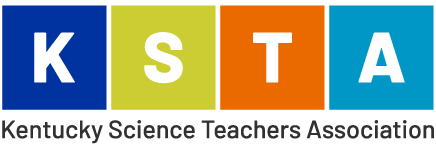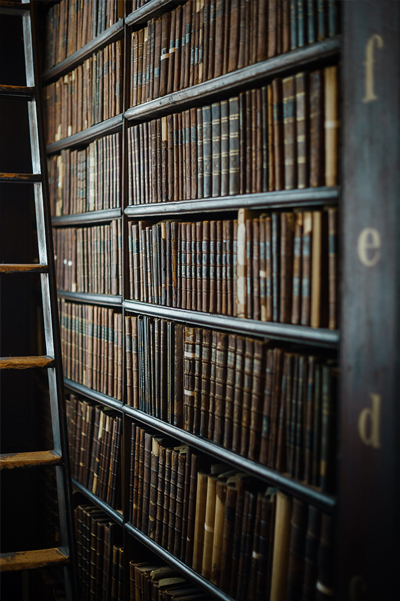History
This historical review of science education in Kentucky is initiated as I set at my computer with the first annual Distinguished Service Award of KAPS continuing to hang so that it greets visitors to my office. Please permit me to quote from my acceptance of the award as it appeared in the second edition of COMMUNIKAPS, the official newsletter of KAPS.
To the Members of KAPS This historical perspective of science education begins with the 1965-1966 school year, the year I began teaching physics and physical science at then Thomas Jefferson High School in Jefferson County, Kentucky. Even though I am a native and attended college in Kentucky my knowledge of science education prior to that date is limited. I became a member of the Kentucky Association of Physics Teachers that year, and that was my initial affiliation with science teacher organizations in Kentucky. I soon discovered that KAPT was not a very viable organization. Its sole purpose seemed to be to serve as a place for 10-20 physics teachers to meet at the annual KEA convention for an hour, introduce themselves, discuss one or two issues, and elect officers to plan for the next meeting. In 1965 most school districts dismissed school for the annual KEA convention; most teachers from across the state received two paid professional development days for attending. While attending KAPT meetings, I learned that the following organizations existed also met during KEA: Kentucky Science Teachers Association, Kentucky Association of Biology Teachers, and Kentucky Chemistry Teachers Association. On July 1, 1967 I was fortunate to be chosen to fill the position as the first full-time state science consultant with the Kentucky Department of Education. Prior to my employment the position had been filled on a part-time basis for one year by Mitchell Watkins. The principal duty listed for the position was to improve the quality of science teaching in Kentucky’s schools. Experience garnered over the next few years from discussions with those attending many of the KEA science teacher meetings lead to the conclusion that they were very similar to KAPT in their viability with 10-20 attending and little to offer those who attended. To fully understand the need to improve science and science teaching in the mid to late 1960’s it is necessary to review world events during this era. On October 4, 1957 the USSR launched Sputnik 1 and the United States which was locked in a cold war with the USSR became gravely concerned that it was falling behind in science and technology. In response, the National Aeronautics and Space Administration was created October 1958 and the national race to supremacy in science and technology began. Concurrently, the National Science Foundation (NSF) began to get deeply involved in the retraining of elementary and secondary education science teachers, and in the development of national science curricula. The 1960’s were defined by NSF sponsored development of new science curricula that became known as the “alphabet soup.” Courses such as PSSC and Harvard Project Physics, ChemStudy and Chemical Bond Approach chemistry, and the green, yellow, blue and black versions of BSCS biology were developed for high school science. Courses such as ISCS, IPS, ESCP and Life Science were developed for middle school science. Courses such as AAAS-Science A Process Approach, SCIS, and ESS were developed for elementary science. Most of Kentucky’s teacher education institutions wrote successful NSF proposals and received funding to offer summer and academic year institutes for practicing teachers to be trained in these new curriculum materials. Many Kentucky teachers took advantage of the opportunity to learn the programs and many implemented the new curricula materials. These efforts resulted in a meeting of about 100 of Kentucky’s best science leaders in Elizabethtown in March 1972. “The Group” as it became known discussed the plight of science education in Kentucky, the need for a viable organization of science teachers that would make itself heard by communicating with all disciplines and levels of science, and by coordinating an overall program. During the ensuing years the names of many in “The Group” have been forgotten. In fairness to all, this history will only cite those who headed significant committees. However, all are owed a huge debt of gratitude for their efforts, and many are among the future officers and awardees of the organization. At a second meeting in Frankfort, it was decided that “The Group” would sponsor a fall conference for Kentucky’s science teachers in 1972. Committees were formed to select a conference site and date, to plan a program, to develop a shell for a constitution in the event an organization was established, and to select a potential slate of officers for a new organization. Dr. George Miner, physics department chair at Thomas More College, was named to chair a group to develop a temporary constitution. Dr. Ronald Atwood, science education professor at the University of Kentucky, was named as chair of a group to nominate a slate of officers for an organization. Dr. Frank Six, physics department chair at Western Kentucky University, was selected to preside over the meeting. Mrs. Anna Neal, science consultant for the Fayette County Schools, graciously offered to host the first conference, and it was scheduled for October 13-14, 1972 at Henry Clay High School in Lexington. As state science consultant, I was selected to chair a group to plan the agenda, schedule presenters, and provide publicity for the meeting. The program planning group completed the following tasks. On August 25, 1972, letters were sent at KDE expense to science teachers in every school in Kentucky announcing the conference and inviting people to register. Elaine Ledbetter, president of NSTA, was secured as the keynote speaker. Dr. Lyman Ginger, State Superintendent of Public Instruction, and Dr. Paul Blackwood with the United States Department of Health, Education and Welfare were also chosen to address the group. Many of the science textbook companies agreed to furnish consultants to conduct workshops on the new “alphabet soup” curricula. On October 13-14, 1972 some 600 science teachers from across the state, from all school levels, and representing all science disciplines gathered at Henry Clay High School, and as stated on the cover of the program the process of “Turning on Science in Kentucky” was begun. “The Group” was ecstatic with the success of the conference. To come from having 10-20 people gather at KEA each spring to 600 people, the largest group to ever assemble in Kentucky for any curriculum area was beyond our wildest dreams. At the general session on October 14, 2004 Dr. George Miner shared the temporary constitution that his group had drafted. The constitution was unanimously adopted with the name for the organization omitted. Following lengthy discussion a science teacher from Henderson County High School proposed that the name for the organization be The Kentucky Association for Progress in Science. The name was unanimously adopted. Dr. Ronald Atwood presented the following slate for election as the first officers of the new organization. Anna Neal, science consultant in Fayette County, as president; Patricia Sommerkamp, science teacher at Tichenor Middle School in Erlanger, as vice-president; Sister Mary Leon Riney, science teacher at Marion County High School, as secretary; and Paul Campbell, planetarium director at Western Ky. University, as treasurer. Dr. Crayton Jackson, science education professor at Morehead State University, was nominated from the floor for the position of vice-president. Patricia Sommerkamp was elected vice-president and the rest of the slate was elected by acclamation. The constitution called for a Board of Directors consisting of two representatives from each of the KEA regions. The following people were selected to serve on the initial Board of Directors: Venona Rogers from the Murray State University Laboratory School and Dale Vaughn from Caldwell County to represent the 1st District; Sister Martha Cargile from Owensboro Catholic High School and George Trigg from Henderson County High School to represent the 2nd District; Neil Embry from the Ohio County Schools central office and Clarence Wolfe from Western KY University to represent the 3rd District; Elizabeth Claypool from Marion County High School and Elizabeth Ferguson from Nelson County High School to represent the 4th District; Lynn Reynolds from Carroll County High School and Ronald Young from Henry County High School to represent the 5th District; John Strattan from the Jefferson County Schools central office and Harriet Korfhage from Valley High School to represent Jefferson County District; Tim Tassie from Highlands Middle School and Dr. Thomas Crawford from the University of Louisville to represent the Louisville District; Barbara Wilson from Lansdowne Elementary School and Dr. Truman Stevens from the University of Kentucky to represent the Central Kentucky District; Eddie Draud from Ft. Thomas and Dr. George Miner from Thomas More College to represent the Northern Kentucky District; Betty Stewart from Ashland High School and Dr. Crayton Jackson from Morehead State University to represent the Eastern Kentucky District; John Baxter from Pulaski County High School and Bethel Burdine from the Pulaski County Schools central office to represent the Mid-Cumberland District; Susie Parker from Middlesboro High School and Dr. Ann Hoffelder from Cumberland College to represent the Upper Cumberland District; and Forester Watts from the Breathitt County Schools central office and Leslie Begley from the Perry County Schools represented the Upper Kentucky River District. The second conference was scheduled to be held at Bardstown High School on November 9-10, 1973. Roy Mosier, science department chair at Bardstown High School, was chosen as conference host The second conference attracted some 500 participants and the following officers were selected. Patricia Sommerkamp was elected President. Sister Mary Leon Riney was elected vice-president. Frank Howard, the state science consultant, was elected secretary and Venona Rogers was elected treasurer.(Check for accuracy) Anna Neal after two years of outstanding service entered the position of past president. New board members included; 1st District-Doris Mouser, Murray State University; 5th District-Billy Shaw Blankenship, KDE; Northern KY District-Nan Boyle, Erlanger Lloyd High School. In addition the constitution was changed to include the office of President Elect. The third annual conference was held on October 18-19, 1974. The second edition of COMMUNIKAPS lists 440 participants. Sister Mary Leon Riney was installed as president and Lynn Reynolds was elected president elect. Barbara Wilson was elected secretary and Ann Hoffelder was elected treasurer. New Board members were: Thomas Lane from Heath High School, Chuck Erickson from Daviess County, Michael McCoy from Warren East High School, Don VanMeter from Eminence High School, Wilma Clayborn from the Louisville District, Ronnie Hampton from Madison Central High School, Terry Hoffman from University Breckinridge School at Morehead State University, Larry Compton from Pulaski County Schools, Opal Patterson from Middlesboro High School, and Jeanette Ladenburger from Ward Elementary School in Corbin. I began this historical review with my being awarded the first annual Distinguished Service Award at the third annual conference, and that is where I choose to end it. I shall leave it to others to add their remembrances of the later years. I will simply close by simply saying thank you to all that have come after that period for continuing to make KAPS now KSTA grow and prosper. |
KSTA Affiliate Chapter
The late Harriet A. Korfhage was a career science (biology) teacher at Valley High School in Louisville. Among her possessions was a plaque commemorating the enrollment of the Kentucky Science Teachers Association as a state chapter of the national association (National Science Teaching Association). Harriet was a leader in KSTA and was instrumental in working with NSTA to create our affiliate membership in 1983. This plaque, returned to KSTA from Harriet's niece, commemorates that moment in our history.
Following retirement Harriet stayed busy, tending flowers and travelling around the world. Today, she is again, in a way, teaching by way of the Harriet A. Korfhage Native Plant Garden - a living laboratory at the University of Louisville.
-Mary Korfhage, niece

